Brenda Marie Smith is the winner of the 2018 SFK Press Novel Contest. Her first apocalyptic science fiction thriller, IF DARKNESS TAKES US, came out in October 2019, and its sequel, IF THE LIGHT SHOULD COME, was released in August 2021. Brenda studied fiction in the UCLA Writers Program. She and her husband live in a solar-powered home in Austin, Texas. Her first novel is Something Radiates, a paranormal thriller. Website: https://brendamariesmith.com; Twitter: @bsmithnovelist
Don't wanna be here? Send us removal request.
Text
Flight of the Monarchs Book Review
Flight of the Monarchs is a poignant and elegiac portrayal of the lasting impacts of abuse and the power of love and friendship to heal it. Told through in-depth characterizations from the points of view of five lifelong friends, the story shifts back and forth from tragic events that happened in 1956 and onto 1967, when these events are still ever-present in the minds and hearts of those who experienced them. There are heady and frightening scenes from the groundbreaking Monterrey Pop Festival to the streets and psychedelic drugs of San Francisco’s Haight-Ashbury and Golden Gate Park. Having lived through those times myself, I can attest that M.H. Reardon has captured them in their full beauty, warts and all.
What I love most about the book is the skill with which the point-of-view characters are brought to life, each with his or her own set of challenges and strengths. Their bonds of friendship, including the inherent resentments, come off as very authentic, all while giving us deep insight into the days when gays began to come out after being closeted throughout history, when abuse was tolerated and misunderstood, and when women quit settling for having their needs disregarded. And one of the friends must report for duty in the Vietnam War, the ultimate fear of our generation.
These friends aren’t full-time hippies or denizens of the Haight, but are regular American young folks from down the California coast who drive up to check out the scene. Yet still, they are shaped, even buffeted, but the changing times. The story also includes a violent bully getting his comeuppance, sexual exploration, gripping and realistic acid trips, intrigue and discovery in a gay night club, and an old love lost but reignited.
Beautiful prose, lovely imagery, engaging characters, and an iconoclastic setting in time and place, all wrapped into a compelling story—what could be better? I highly recommend M.H. Reardon’s Flight of the Monarchs, and I cannot wait for the other two novels in the series. I give the novel five enthusiastic stars and all the good feels.
Brenda Marie Smith, author of
If Darkness Takes Us, If the Light Escapes, and the
soon-to-come If the Sun Spares Us
1 note
·
View note
Text
My Heart-Warming Thanksgiving Story of the Flubbed-Up Pie
I want to tell you about the flubbed-up Thanksgiving pie I made. First you should know that “flubbed-up” is a substitute for my grandchildren’s sake of another term that means messed-up and also starts with an F.
My son, JD, is a stalwart eco-warrior who’s a mechanic providing biodegradable motor oil and other green automotive stuff to his customers. He keeps the family cars running for only the price of parts. He is sweet and generous and I love him like the dickens, whatever exactly that means.
JD is a vegan, and not just your ordinary vegan, but a vegan who will spend his last dime to eat only organic food that has not been contaminated by pesticides, herbicides, or even by suicides or fratricides committed by a person in the extended family or ancestry of anyone who ever touched or thought about touching his food. If this food sat across from, and at the opposite end of, a long aisle from a side of beef in the grocery store, JD will not eat it. If I’m in a bad mood, as I sometimes am, trying to cook for JD is enough to make me want to commit some kind of “-cide” against this son I love so much.
We have Thanksgiving every year in November, right? And JD has been into his organic, anti-GMO, locally-grown vegan thing for a number of recent years. One would think by now I’d have figured out that I need to plan Thanksgiving with JD in July, maybe March. But, true to form, this particular year, I waited until a couple of weeks before JD’s big turkey-less, Tofurkey Day to discuss what I should cook that he might consider eating if I tweak my nose in the right direction.
I’m getting old. I have little patience for complicated Thanksgiving dinners that involve special dishes for each particular person in this ever-expanding family. I mean, I love these people more than my own life, but I have reached my limit. I need to make Thanksgiving infinitely less complicated. Between our various food intolerances, adamant ideals, outright dislikes, and other peccadillos, there is very little food on Earth that I and my trooper of a husband, Doug – who is also getting old, but who seems to be handling it much better than I am – can cook for this passel of people to share.
My idea for this year is to make as much vegan-organic food as possible and for everyone to share it, so that I don’t have to make a regular option and a vegan-organic option of every dish. Sounds reasonable enough. I mean this idea is great if you have an infinite supply of time to figure it out and scads of money to pay through the nose for organic components of our family’s traditional dishes.
I’m about to tell you about the flubbed-up pie. I promise.
This year JD and I go painstakingly through what he’ll need to scrounge up from the mysterious places he buys organic wonder food. He has no earthly idea of the sizes available for these components or the prices for anything at all, especially for each unit. So first I give him a list of things to price, to get sizes for – the number of fluid ounces, how many cherries per can of organic pie filling, how many organic whole-wheat rolls per pan and the square footage of each pan – so JD can buy what I need to cook for an army of people to eat Thanksgiving Day, to send everyone home with leftovers, to eat leftovers and nothing else for a week, and to throw out leftovers at the end of said week while being sure to have plenty to share with the compost pile.
There are certain things I’ll be cooking knowing full well that JD won’t eat them – turkey, for instance, celery (JD is a vegan who hates celery. I have nothing to add to this). Since I have JD occupied buying organic food for everyone, I assign the vegan entrée to my son Aaron, because he’s a vegetarian anyway and he can damned well be a vegan for one day so that he and his brother can share an entrée.
We will have dressing with chicken stock in it and vegan dressing, that kind of thing. Then, for the sake of at least some simplicity, we’ll have a few totally vegan organic dishes for everyone – sweet potatoes, cranberry sauce, green bean casserole (yes, this can be organic-vegan if you’re patient enough), rolls.
Then there will be pies. Pies are my holiday thing. When I was younger, I made two or three kinds of pie with several per type for both Thanksgiving AND Christmas. Now I’m a one type of pie per holiday person. I want the pies to be cherry for this holiday, because cherry pies are easy to make. The grandkids are crazy for cherries, and they are who I’m most interested in pleasing.
I should add that this year my hubby Doug has to work on Thanksgiving. It will be my first time to cook Thanksgiving dinner without him in twenty-three years. Not to worry. I’ve enlisted my stepson Matt to help lift, stir, and toast things and juggle the moving of things from one oven rack to another all day long. We’ve got this, me and Matt. Doug teaches Matt how to prep the turkey the night before, and it’s ready in the fridge so that Matt just has to stick it into the oven on TG morning and leave it there for hours while we cook other stuff.
Back to the pies. JD has informed me that, of all foods that exist in the universe, the worst foods to eat if they are NOT organic are cherries and berries, because the pesticides, herbicides, and other kinds of “-cides” concentrate in the cherries and berries in an attempt to murder us – just kill us outright dead.
Even though JD has always lapped up cherry pies in the past, even after he went vegan-organic, this year he will not eat them unless the cherries are organic. Not only that, he wants organic vegan crusts as well. All right. I can do this.
But JD cannot find organic cherries at his favorite haunts. We agree that I’ll make a couple of organic peach pies for him with regular cherry for the rest of us – because we are addicted to pesticide-riddled food and we don’t give a flip anymore. I feel a little guilty about this on account of grandchildren. I don’t want to feed poison cherries to children. They can eat peach pie, although I know they love cherry most.
As Thanksgiving draws nearer, I make a list out of the scraps of information JD has obtained, telling him how many cans, pans, cases, and barrels of each food I need. I tell him I simply cannot afford all this organic sh— “stuff” (I’m just going to call this “shtuff”), and JD kindly offers to pay the difference in the extra price of organic items over the price of poisonous All-American food. I tell JD that this grocery store where he plans to shop is growing faster than they can keep up with, and chances are good the store will run out of TG food many days before the big event.
Undaunted, JD waits until the last possible minute to buy the food and only then after I insist that he get his vegan behind to the store, like NOW, or I won’t be cooking one single damned organic or vegan anything for him or anyone else. I mean we have to get the other groceries for TG when we’re not working, and this is the last day we have time for that. I have no idea what to buy in terms of other groceries until I see what JD can procure at the health food store after it’s been cleared out by more forward-thinking customers. I may not have mentioned that JD is not a planning type of organic-vegan.
I won’t say, “I told you so,” but I will mention, because I am passive-aggressive sometimes, that JD’s favorite grocery store has no organic fruit pie filling of any sort whatsoever. All he’s managed to buy in terms of pie filling are two cans of organic peaches, which is only distantly related to pie filling. JD does have two sets of organic pie crusts. Okay, fine. We’ll have one peach pie then, and we’ll use the other organic crusts for non-organic cherry pie.
Meanwhile, the hubby goes to the regular grocery store for toxic cherry pie filling amongst many other things, and doesn’t realize until he returns home that he’s bought only two cans of regular cherry pie filling and three cans of organic. So, the regular grocery store had the filling JD couldn’t find at his organic vegan store, and Doug has accidentally purchased it. Man. The kismet of this, the ass-backwards synchronicity of it, is stunning.
Trying to rally, I say, “Great. I’ll use these other organic pie shells – the ones I won’t be using for peach pie – to make an organic cherry pie.” It seems like our pie problems are solved. Except on the night I start making pies in advance of TG Day like I always do, I run out of time to make cherry pies while also boiling down canned peaches for hours on end.
When JD comes home later (Did I mention he lives with us “temporarily”? Do not get me started about the gnat problem he’s caused with organic food rotting in his bedroom), I ask him to please boil down the peaches. I’ll be around doing other important shtuff, and I’ll advise him as he works. He doesn’t have time, he says. He has tons of work to do this week, he says, because in his mind I don’t have anything to do this week except to make his freaking pie.
Suggesting that JD cook the peaches, like now, while he’s hanging out grazing on food he’s spread across the living room and watching TV (and murderous TV, not any kind of flower-childy organic vegan TV) has no effect on JD whatsoever. I might as well not exist.
All right, either I’ll make the danged peach pie tomorrow or I won’t. I’ve got an organic cherry pie made already. It’s even got a crisscrossed top crust so it can be easily distinguished from the deadlier cherry pies. Whatever.
Now it’s Wednesday evening before the big day. Doug has to get up on TG morning at 3:30-ish, long before oh-dark-thirty, so that he can work while the rest of America watches football and parades. Doug will be going to bed at 8:00 p.m. this evening or as soon thereafter as he can get there. I ask Doug to please open JD’s canned peaches for me, because the can-opener and I have issues, and JD is nowhere to be found, no doubt staying out as late as possible to avoid helping me make his bleeping pie.
Doug opens the two peach cans, and there are like eight or nine tiny peach slices in each can. They are basically cans of peach juice with a few scraps of peach. I seriously doubt there are even two small peaches between both cans. This peach pie is going to be scanty on the peach side. But I am making this pie come hell or high water, so I drain off the juice except a little dab, saving the juice for JD because I’m such a good mother of a busy forty-year-old organic-vegan with important shtuff to do elsewhere tonight. I plop the pot containing a few teaspoons of peaches onto a low fire on the stovetop.
It takes almost no time for the little juice in the pot to boil off. I’ve got a half-ton of peach juice here, so I add a little more to the pot – we’re talking a quarter cup at most. I look away from the pot for a minute or two, and the pot’s suddenly overloaded with peach juice – like way too overloaded because apparently these few scraps of peaches, scrawny as they are, have about a gallon of peach juice in each of them and this juice is cooking out of those peaches at an alarming rate. Oh man. All right I’ll just have to boil these peaches for a very long time. Maybe they’ll be ready by next Thanksgiving.
But the peach juice is not cooking away. This pot is full of peach cider with some peach slices for a garnish. If I were a smart woman, which I am not at this moment, I would drain some peach juice off right this instant. But do I? What do you think? Instead I decide, with Doug’s help, that I should add this organic sugar JD has provided, in the hope the sugar will contribute to the thickening and cooking down of this mass quantity of boiling peach juice.
The peach pot is boiling. Doug makes grilled cheese sandwiches because who’s got time for making dinner, much less eating it, when it’s the night before Thanksgiving? I’m in Doug’s way trying to watch this peach pot, so I hover outside the kitchen and dash in from time to time to check the peach syrup mess. We eat sandwiches. Doug goes to bed, but before he goes we decide there may be hope for these peaches after all as the organic-sugary peach juice appears to be slightly thicker.
I keep watching the peach pot. I do other shtuff and come back and watch it some more. My office is in a converted garage off the kitchen, and I need to do some shtuff out there. I adjust the fire lower and go to the garage office for ten minutes – it can’t be one second more than twelve minutes. Suddenly I think, uh-oh, peaches! I run into the kitchen to greet a foamy pot of peach goo that is partially burnt. But do I handle this sensibly? Of course not. Before I have thought a single thought, I have stirred this pot of peach goop enough to spread some burnt shtuff throughout the pot. I’ve contaminated this alleged peach pie filling. I wonder how toxic this burned shtuff is, but I simply don’t care anymore.
There has got to be something salvageable here, because I want this to be true and am proceeding as though it is. While the peach goop cools into some sort of peach fudge or taffy or peach peanut brittle without peanuts, I patiently poke holes in an organic pie shell and set it to pre-bake while I make a crumble pie topping out of the other shell by adding more of JD’s organic sugar and organic cinnamon, too. I’m determined for this shtuff to be good, damned good.
I go away for like five minutes and come back to discover that the pre-baking shell is a convex mound of inflated crust. There’s a Super Dome all up in my oven. Evidently the holes I’ve poked in this shell are not sufficiently doing their job. I reach into the dangerously hot oven with a fork and poke bigger holes until the shell deflates. I tamp down the edges until the shell no longer resembles a flying saucer.
By now the peach goop in the pot looks pitifully small and brown. It seems kind of stretchy, definitely gloppy. But it’s made of lovely organic peach slices – however few of them are left – plus organic sugar. How bad could it be? It will be a super-organic peach candy pie that’s only a tiny bit burnt.
I slap the peach goop into the pie shell. It doesn’t even cover the whole bottom of the shell. I scrape every drop of syrupy goop into the shell, any goop that’s not too shtuck to require a hammer and chisel to get it out of this blankety-blank pot. Even though the peach pie innards are only about an inch thick and sparse – extremely sparse – I throw on the crumble topping, and spread it to cover the filling – which is easy-peasy since there are so few peaches to cover. I stick this concoction into the oven, set the timer and disappear to my office, stage left.
I’m playing a computer game, tweeting, and other shtuff in the office when I realize that a beeping noise I’ve been managing to subconsciously ignore must be coming from the kitchen timer. I rush into the kitchen, throw open the oven door, grab some pot holders, and pull out an overly baked peach pie that is too brown. But it is not burnt. It is NOT freaking burnt!
This is fine. This is totally and completely fine. I will serve flubbed-up, organic, much too brown, overly sweet, nearly peachless, candified peach pie for Thanksgiving dinner and nobody, I mean nobody, especially JD, better say a mother-flubbing word about it.
I leave this thing I’ve created to cool and return to noodling in my office. JD at last comes home. He has his grazing palate of munchie-type organic vegan food spread across the coffee table in front of the television when I finally come back inside. I sit down and tell JD the story of the flubbed-up pie, and I am not saying flubbed, I promise you that. JD and I start laughing, and we keep laughing. We’re trying to be quiet because Doug’s upstairs above us trying to sleep – I mean the poor man has to get up at 3:30 on flubbing Thanksgiving morning to go to flubbing work.
But trying hard not to laugh too loudly just makes JD and I laugh more and harder. Come on. This is hilarious. We concoct delirious stories of what the insides of the so-called pie might look like now that it’s cooled – how far will it stretch? Will it be fudgy or so hard that we break teeth on it? We are doubled-over crying and laughing and shushing each other to laugh quieter.
Finally we run out of steam, and I head back out to my office. I am an extreme night-owl. I make no apologies for this because they would not stop me from being one. JD has inherited this annoying trait from me, and I’m a little sorry for him about that.
Before I leave JD so he can keep binging on food and his murderous TV show, I ask him to please cover the pie with decidedly un-organic tin foil and stick it in the fridge before he goes to bed. I’ve got a heartwarming Thanksgiving story to write, and I have no more time for taking care of this so-called pie.
I am out here writing for way too long because, as everyone who knows me at all understands, I am wordy. I realize it’s 3:00 a.m., which is too late even for me. Doug will be getting up any second. I have to get inside and pretend to be sleeping before he stumbles past me to get coffee so he can get ready for flubbing work. I abandon this unfinished story and make haste to pretend to sleep.
But Doug, because this is already a flubbed-up Thanksgiving, has forgotten to make coffee and set the timer. He’s banging around in the kitchen half-asleep, and I give up on this pretending to sleep idea and give Doug lots of sympathy for his coffee-less predicament. He laps this sympathy up.
Doug schlepps off to work, I sleep for a little while, then I get up to finish this never-ending Thanksgiving tale. Now it’s a little past time to start the turkey baking, Matt has just pulled up to help me, and I’m still in my PJ’s, having completely forgotten to drink my coffee. This is already a flubbed-up flubbing Thanksgiving. I have more flubbing shtuff to bake and burn and destroy. I’ve got to get moving.
2 notes
·
View notes
Text
Some Ways to Write What You Know
People told me, “Write what you know,” and I thought, “Well, that sounds boring.”
But I’ve since discovered ways to follow that advice. We can put our personal emotions into our characters and use them for different purposes. We can pull bits from one facet of our lives, add pieces from other aspects, stir them up, and sprinkle them throughout a story to good effect.
After I self-published my first novel, a paranormal thriller called Something Radiates, friends who read it kept saying to me, “This book is about you and your ex-husband, isn’t it?”
“My exes were bad,” I would say, “but they weren’t supernatural stalkers.”
Still, the truth is that my two ex-husbands were abusive to me in different ways. One was controlling and tried to squelch my intellect. He burned my poetry, saying I was on an ego trip. The second ex had a serious mean streak that first emerged in increasingly cutting remarks. Then, he lost it and beat my kids. He came damned close to pushing me down a steep flight of stairs. I was frozen in fear, but he did me an enormous favor and dumped me.
Once I was free of these men, I got my revenge by taking the worst aspects of each of them, smooshing them together, adding supernatural abilities, and ramping them into overdrive to create a truly creepy villain for Something Radiates. It was healing for me to make my villain even worse than my exes, especially when the villain gets his comeuppance in the end.
I also used my experience of falling in love with a good man, my longtime current husband, to write a romance for my protagonist—the best kind of revenge. And I set the novel in Baton Rouge, where I once lived, with a trip to a cave near Boulder, where I’d camped out long ago. The novel is loaded with hippie spiritual lore and belief systems that have always fascinated me.
In my next novel, If Darkness Takes Us, and its standalone sequel, If the Light Escapes, a solar pulse destroys the U.S. grid, and the characters must survive with no power, cars, phones, or running water. Many reviews for If Darkness mentioned that I must have done a lot of research to describe the details of their lives so well. But when I was much younger, I’d lived off the grid for many years by choice, in a vegan hippie community where my sons were delivered by midwives. I didn’t have to research it. I lived it. And I set both novels in an altered version of my own Austin, Texas, neighborhood.
In If Darkness, which is narrated by a grandmother named Bea who’s raising her grandkids in an apocalypse, I was able to draw on my experiences with love and divorce as well as my twenty-eight years of raising five sons, plus several more years of being a grandmother. I also gave Bea some health issues I’m familiar with. While she is similar to me in certain ways, she’s her own woman with plenty of differences, too.
For If the Light, which is narrated by Bea’s eighteen-year-old grandson Keno, I believe his heroic nature and casual-cussing voice came straight from those sons of mine, tempered by the college students I worked with for fifteen years. Keno was waiting inside me to be let loose. It was astonishing how fast his words spewed out of me. And as I delved deeper into his character, he revealed even richer veins of heroism, intellect, and moral conviction. I have watched many young men come of age in my life, but seeing Keno do it in an apocalypse made my heart bleed.
I have a novel in development that will call on my experience living in the woods of the Ozark Mountains, on my attraction to Eastern religions, and on the time that I spent living communally. For all my fiction, I pull character emotions from the various ways I have felt them myself or have observed them in others.
The best advice I can give to any writer is to dive into life and live it to its fullest. Then you will have no shortage of tales to tell and experiences to draw from, whether your characters dwell in alternative worlds or come straight out of history. And your stories will never be boring.
3 notes
·
View notes
Text
WHAT TO STOCK OR WHAT NOT TO STOCK FOR AN APOCALYPSE SUMMING UP (Updated)
In the King James Version of the Bible, in the Sermon on the Mount, Matthew 6:19 and 6:20, Jesus is quoted as saying:
“Lay not up for yourselves treasures upon earth, where moth
and rust doth corrupt, and where thieves break through and steal:
But lay up for yourselves treasures in heaven…”
A beautiful sentiment. For purposes of this discussion, I would focus on the real treasures worth laying up on Earth, regardless of your religion or lack thereof, and whether or not an apocalypse ever comes.

Rather than stockpiling cash, precious metals, and investments in Fortune 500 companies, instead of collecting hot cars and designer homes and electronic devices, it’s best to invest in land and water resources. Solar and wind power, farming equipment, tools, goats, chickens, canned food, dried beans and grains, and vegetable oil by the barrel, plus massive quantities of fresh water.

I’m talking cisterns, lakes, rain barrel collection systems, deep Artesian wells with hand pumps, solar-powered water filtration systems, great rivers, aqueducts and other plumbing fed by gravity, ponds stocked with bass and catfish, plow horses with hay and oats for them to eat, acres and acres of arable land, and food seed by the ton.






Perhaps more important, invest in each other. Keep your lines of communication open and your relationships intact. Keep your loved ones close at hand. Take extra good care of those in need. Join a co-op and learn how they operate, their systems of true democratic governance: one member, one vote.
Be prepared to set aside your egos and complaints so that you can work together to save yourselves and thereby save the world. Because it’s the ones we love who are the point, after all—our reasons to live.
It’s all been done before, folks, and it can be done again, assuming we have any air left to breathe. Best to start making sure of that now by planting trees, like gigantic forests full of them.


“Shovel shit till you turn blue and fall down,
Laugh and cry
Keep your focus, keep your eyes upon the prize
Never quit, DO NOT GIVE UP, love each other well
Please learn to steer before you drive off in the night
Take from those who went before and find your own way too
But be relentless in your protection of the trust
Make your mom’s proud and your founders rest to know that you
Will not devalue what they left or let it rust
The magic of pure agreement, your most powerful tool
You must cherish it with all your earthly might
For it’s the whole of you, your vision, from whence attainment streams
Lock on toward It, plunge forth boldly, hold on tight
And, if I could leave you anything …
Perspective
Is the one thing I would most so love to give
A dimension to your viewpoints, a belonging
A sense of humor, history, patience as you live.”

Here’s hoping that our plans and stockpiles for apocalypse are never needed. Maybe if we start living more sustainably now, we can improve our odds of long-term survival no matter what happens next.
Thanks for reading. If you haven’t seen it yet, please check out the companion series WHAT NOT TO STOCK FOR AN APOCALYPSE.
To see how my unlikely apocalyptic hero, seventy-year-old Bea Crenshaw, shepherds her grandkids and neighbors through the aftermath of a solar pulse, check out IF DARKNESS TAKES US on Amazon: https://www.amazon.com/Darkness-Takes-Brenda-Marie-Smith-ebook/dp/B07WK9BQHNor order it from your favorite indie bookstore:
The sequel, IF THE LIGHT SHOULD COME, will be out June 2021 from SFK Press.
Please return to this blog soon for discussion of living off-grid, apocalyptic movies, and more.
3 notes
·
View notes
Text
What TO Stock for An APOCALYPSE, PART FIVE (Updated)
KNOWLEDGE and a set of OLD-FASHIONED SURVIVAL SKILLS will probably serve you better after a cataclysm than almost anything else.

If you spend time ruminating on all the things that happen in America and the rest of the modern world, things that keep us alive and generally healthy, you will notice a nearly unfathomable list of occurrences in the background of our lives—goods and services we consider essential but never stop to think about. (Though COVID-19 has forced us to think about many of them now.)
Aside from water, food, and electricity, there are sewers, healthcare systems (such as they are), public health departments, libraries, roads, transportation, infrastructure, law and order, government, police and fire departments, medicines, education, art, music, news from near and far, the internet, an endless array of things to buy if we can afford them, innumerable places to travel, and gobs of stuff competing for our time. Much or even all of this would break down and be gone in a true apocalypse. The people who survive will be those who know how to handle much of this stuff themselves.
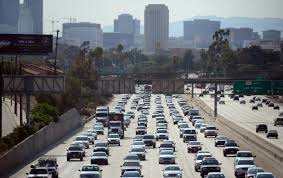
Since this list is so endless, and because my purpose is not to bore you to death with details, my exhortation to you readers is to please do your best to learn how to survive and prepare on your own. Given the rapid pace of climate change, even if we don’t fall all the way into apocalypse, we are likely to be forced to scale way the hell back. We should scale back. We need to scale back. We all know that the Earth cannot sustain our pre-pandemic lifestyles.

For the record, I am not a prepper. I do not go around freaking out about the coming End of Days. But I do cogitate on these things from time to time, and I write novels about possible scenarios. In my novels, I took a different route than the standard apocalyptic tale. My assumption is that it would take a great deal of time for civilization to fully collapse. At least initially, much human morality and compassion will remain. If people try hard to work together, and if the situation allows, they can keep the deterioration from becoming complete.
So, become men, women, and children of the New Renaissance and learn how things work and alternative ways to do them, practice old skills and learn new ones, stretch your brains and your imaginations. Toward that end, here are some of the areas that we all need to bone up on, aside from what I have already discussed in earlier posts:
· Learn and practice old-fashioned skills like: soap-making; candle-making; laundry without electricity or plumbing; knitting; sock-darning; fire-building; quilting; basketry; rope-making; carpentry; gravity-fed plumbing; hair cutting; butter churning; cheese making; chair caning; furniture building; cabinetry; glass-making; log-splitting; barn building; shoe-making; the creation of eyeglasses; dentistry; the making, patching, and mending of clothes; spinning and weaving; undertaking; nutrition; sanitation; the making of acoustical music and natural art.

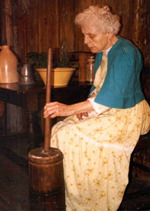
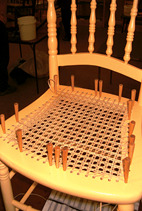

· Study outhouses and ways of keeping them sanitary. They can spread deadly disease if they aren’t well-managed. Composting toilets are a great way to go, but they still have to be clean, preferably with something that actually kills germs. And you have to know where to dig an outhouse if you want to keep your groundwater clean. I once lived on a commune. Before I got there, dozens of people got hepatitis from drinking water downstream from a neighbor’s outhouse. Don’t repeat that mistake.

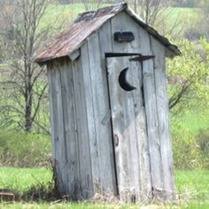

· While I am neither a gun owner nor a fan of guns, and I’m not an alarmist or someone who wants to see more guns stockpiled in this world, you may need a means of protecting yourself. You’ll want to learn self-defense.

· You will need bicycles, wagons, carts, dollies, wheelbarrows, skateboards, roller skates, buggies with horses and food to feed them—ways to get around and to haul heavy stuff: Ropes, chains, skids, etc.
· If you can, start stocking critical supplies: soaps, matches, toilet paper, pens, pencils, paper, pulleys, candles, needles and thread, yarn, ladders, toothbrushes and toothpaste, tools, knives, woodstoves, grills, firewood, water and food storage containers, charcoal, clothing, shoes, kerosene, bleach, lime, wind-up radios (which will charge cell phones, if the phones still work), wind-up flashlights, washing tubs, buckets and bins, clotheslines and clothespins, washboards, boots, shoes, long underwear, batteries, lighters, good jackets, and socks—lots and lots of socks.
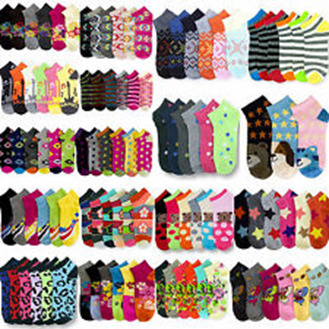
· You will need to know about medical care, including the standard Western medicine we practice now, plus Eastern medicine and folk medicine. You’ll want to know how to grow medicinal plants and herbs, and you should stockpile basics: whatever meds you personally need to stay alive, as well as aspirin, antibiotics, antacids, anti-diarrheals, Tylenol, beaucoup asthma inhalers, insulin and other diabetic meds, blood pressure meds, first-aid supplies, splints, crutches, wheelchairs, IV equipment and fluids, scalpels, pump respirators, stethoscopes, otoscopes, blood pressure cuffs, tweezers, vitamins, minerals, skin creams, sunscreen, antibiotic and cortisone ointments, CBD oil, on and on and on.
· You’ll need the means to educate your children and to continue learning yourselves.
· You’ll want things to help you pass the time—especially the long winter nights with poor lighting: board games, card games, dice games, jacks, paddle balls, outdoor sports equipment, hobby stuff, acoustic musical instruments, art supplies, those balls you roll around in your hands when you’re tense, and BOOKS, BOOKS, BOOKS.


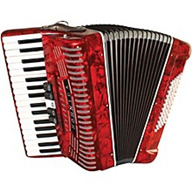
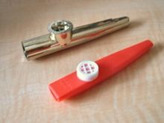

More than anything, you’ll need quick wits, unbending determination, and people to love.
Here are many of my reasons to stay alive and to NEVER, EVER GIVE UP:
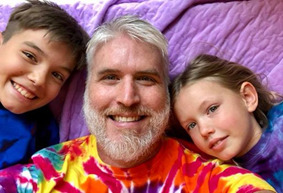
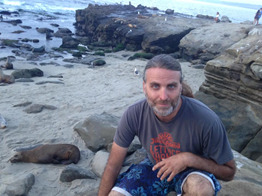


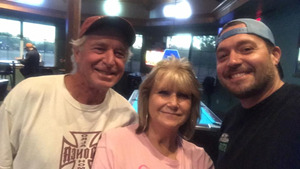

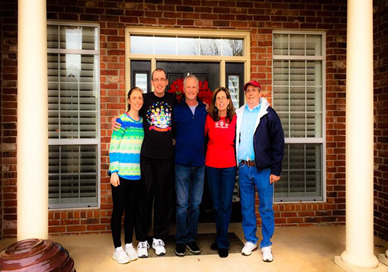
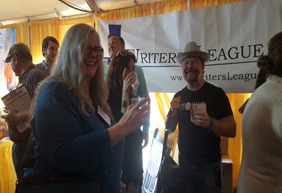

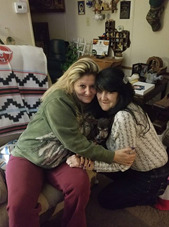

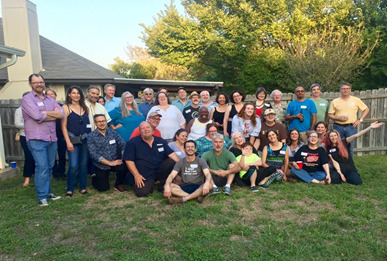
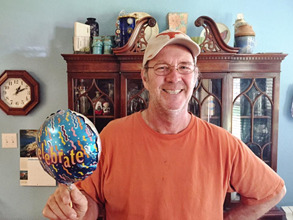
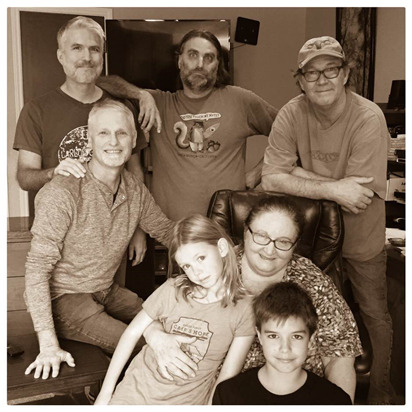
And whatever you do, DO NOT forget the duct tape!
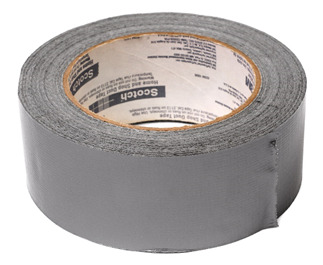
To see how my unlikely apocalyptic hero, seventy-year-old Bea Crenshaw, shepherds her grandkids and neighbors through the aftermath of a solar pulse, check out IF DARKNESS TAKES US on Amazon: https://www.amazon.com/Darkness-Takes-Brenda-Marie-Smith-ebook/dp/B07WK9BQHN or order it from your favorite indie bookstore:
The sequel, IF THE LIGHT SHOULD COME, will be out June 2021 from SFK Press.
STAY TUNED FOR THE FINAL INSTALLMENT OF “WHAT TO STOCK FOR AN APOCALYPSE.”
NEXT: SUMMING UP
4 notes
·
View notes
Text
What TO Stock for An APOCALYPSE, PART FOUR (Updated)
After the grid goes down, If you want to survive well, you’ll need light and refrigeration, and for that you need SOLAR and/or WIND POWER.
8. SOLAR POWER:

Building your own solar power system is an endeavor fraught with potential failure, so be sure you know what you’re doing before you embark on such a project. And it will be costly, no matter how you go about it. For more information on how to do it, try these links (and there are scores more if these don’t help you enough): https://www.solarreviews.com/blog/how-to-build-your-own-solar-panel-system and/or https://www.youtube.com/watch?v=CHYVhNdlYM4.
For my own solar-powered home, we hired professionals, although we were fortunate to live in Austin, Texas during a time with the City utility was offering substantial rebates. Federal tax credits were also available, so our net cost per set was about $5,000 for each $25,000 system. We have two sets of panels, one installed in 2007 and the other in 2013, with a total capacity of 6 Kilowatts.
Here’s a view from Google Earth of our house from the backyard (notice that the panels get plenty of sun—no trees or chimneys in their way—and they face to the South, Southeast & Southwest):
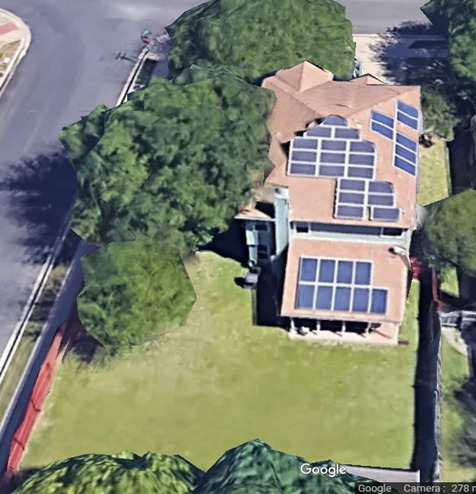
We love our solar panels. They save us gobs of money on our electric bills, around $2,000 per year. But make no mistake—we do NOT live off the grid. To run our air conditioners and keep marginally cool in the Texas heat, we would need a lot more panels. And to run lights, fridges, TVs, and computers at night or on rainy days, we would need a battery system that we were told would cost at least $60,000 (in 2013). Just like Bea in my novel, I can’t run this system off the grid without a substantial investment and a ton of work. And since the City utility system paid for most of these panels, I doubt they would allow us to go off-grid.
There are smaller systems that will run power in an RV—400 watts. They certainly won’t run a big A/C system, but they should at least give you some lights and radios and maybe even a medium-size fridge (only in the daytime unless you have battery backup). You can find out more about them here: https://www.youtube.com/watch?v=IRRKHYwB3Uo and dozens of other places online.
Whether or not you have solar power, it’s best to stock up on candles, too, and lanterns plus the fuel to run them. And if the power stays down for years, you’ll need to learn to make your own candles. Here’s a link for how to make candles from shortening (so stock up on that and/or candle wax, or learn how to render your own lard from hogs): https://macgyverisms.wonderhowto.com/how-to/make-long-lasting-wax-free-candles-for-your-home-0159878/. You can also make candles from beeswax, but they burn awfully fast: https://www.youtube.com/watch?v=urjpaIGDvao
There’s a great series of books called FOXFIRE BOOKS that tell you how to render hog fat, how to make soap, and hundreds of other tips for survival, all gleaned from our recent ancestors. Better buy the full set in advance of an apocalypse and read them so you’ll know what else to add to your stockpiles. https://www.foxfire.org/shop/category/books/
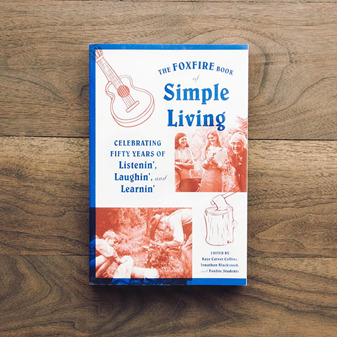
9. WIND POWER:
A wind power system big enough to run an average American home will cost you $48-$65,000 and will require you to have at least one acre of land, because the towers are too tall for most urban neighborhoods. Towers need to be as tall as 140 feet to get up high enough to capture the strongest prevailing winds.

But you can use windmills for smaller projects, like pumping water—if you have a well, a pond, or a lake to pump it from. Those of us who are old enough remember windmills as a common sight throughout the countryside. These babies, many of which are still in use today:
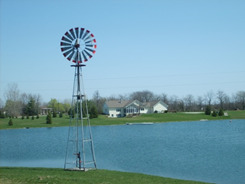
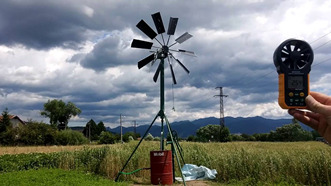
From what I’ve learned through my admittedly limited research, windmills don’t appear to be a good option unless you are a landowner or have very tolerant neighbors and city codes. It’s probably a good idea to pressure your local governments and utility providers to invest in wind energy immediately, and to make the power grids impervious to an electromagnetic pulse.
In Texas and other places around the country, we have wind farms with hundreds of huge wind turbines.
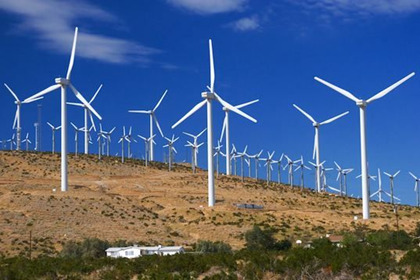
And then there are the Dutch, masters of wind power for centuries:
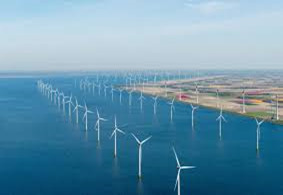
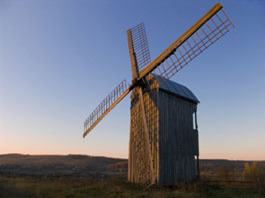
To see how my unlikely apocalyptic hero, seventy-year-old Bea Crenshaw, shepherds her grandkids and neighbors through the aftermath of a solar pulse, check out IF DARKNESS TAKES US on Amazon: https://www.amazon.com/Darkness-Takes-Brenda-Marie-Smith-ebook/dp/B07WK9BQHN or order it from your favorite indie bookstore:
The sequel, IF THE LIGHT SHOULD COME, will be out June 2021 from SFK Press.
STAY TUNED FOR FUTURE INSTALLMENTS OF “WHAT TO STOCK FOR AN APOCALYPSE.”
NEXT UP: KNOWLEDGE AND FORGOTTEN SKILLS
3 notes
·
View notes
Text
What TO Stock for An APOCALYPSE, PART THREE (Updated)
Right up there next to water, a top-priority post-apocalypse need will be FOOD.
5. THE FOOD you will need:
Since most of us will be short on water, dried beans and other foods that require a lot of water for cooking may not work out too well. Dry beans also need a lot of cooking time, meaning more firewood or other fuel. Canned goods are a practical way to go (and most come with some liquid inside), though it would be hard to stock enough to last years. Plus, canned goods can get mighty unappetizing over time, and will eventually spoil.
To survive well without getting malnourished, you’ll need protein, carbohydrates, vitamins, minerals, and a little fat – the basic food groups, though meat and dairy aren’t essential. Unless you have your own well-guarded farm or hunting preserve, you can’t count on being able to eat meat. And if you’re growing your own food, in most cases you will get much more protein per acre by growing beans instead of animals. But chickens and milk goats can be very useful and will take up less space than other critters (though you’ll need to learn animal husbandry between now and the end of the modern world).


Whole proteins are made up of eight essential amino acids. Most beans and nuts have seven of those acids, while most grains have only one. To get whole protein from beans or nuts, you need a companion grain to eat with them to make the protein complete. Think beans and rice, beans with tortillas, beans with cornbread, hummus with chips, peanut butter sandwiches (made with pancakes or biscuits cooked over an open fire).




Soybeans have the full eight essential amino acids, but they take a lot of time and water to cook. My personal experience with them (which is extensive) is that they aren’t digestible unless they’ve been pressure-cooked for at least an hour, and pressure cookers can be dangerous and hard to come by. Soybean skins tend to plug up the vent holes. If the cooker isn’t removed from the fire immediately and the skin isn’t removed from the vent, the cooker could explode. People can get burned by the buildup of steam inside the cooker.
Soybeans are a pain, BUT, if you need whole protein, they will provide it. The flavor is not the best, the texture can be off-putting, but they’re not bad in tortillas with salsa and fresh veggies. Once the beans are cooked, you can make decent patties out of them if you have anything to flavor them with. Some women, like me for instance, can’t eat soybeans when they’re pregnant, and soy allergies are serious issues for many. If you have a lot of water, you can make soybeans into soy milk and tofu. There’s also tempeh, the making of which is an artform.



You can make milk out of lots of things these days: almonds, oats, rice, hemp (my fave). I don’t have a clue how to make these things, but I’m sure you can figure it out—if you get to googling while the internet still works.
In my novel, prepper Grandma Bea stocks barrels and bags of many kinds of beans, flours, oatmeal, rice, sugar, cooking oil, peanut butter, sugar, salt and pepper. She has cases of canned goods—mostly soup, chili, and stew—and cases of powdered milk and eggs.
6. GROWING FOOD
If you want to get serious about providing for long-term survival (or if you just want to live more sustainably), you will need to do more than stockpile food. You need to set yourself up with ways to grow it. Think garden beds full of rich soil, compost piles, bee hives for honey and pollination, fruit trees and vines, and ways to scare off the birds. And you need to stockpile seeds that suit your soil, drainage, and growing season, along with plenty of organic fertilizer and the tools and equipment to help it all grow. You’ll need to get creative about where and how to grow this food: in your suburban yard, inside in front of your windows, in pots and buckets and barrels, on rooftops and ledges, along fences, etc., etc.






My main character, Bea, has fresh tomatoes, peppers, squash, greens, purple hull peas, and herbs growing in pots and in her garden. She has a second garden full of root veggies, and she has a bee hive installed in an exterior wall. A few neighbors have chickens. One family has some rabbits. When the neighbors finally get organized, Bea has plans for urban farming that involve building gardens and compost piles in yards and vacant lots, and later plowing up front yards for cornfields, and the neighborhood park to try growing winter wheat and other grains in the scorching Texas heat.
7. STORING & PRESERVIING FOOD
In my novel, Bea has a root cellar full of root veggies: russet and sweet potatoes, carrots, garlic, and onions. Beets don’t grow so well in Texas as far as I know (meaning, I don’t actually know). Turnips are, well, turnips, but they last a long time in cool, dry storage. Parsnips, rutabagas, and Jerusalem artichokes are other good root veggies to grow and store.
Root cellars are awesome if you can keep them from filling with ground water. Being under the earth tends to keep the temperatures nice for storage of food with a long shelf-life, like root veggies and—for a lesser length of time—compact cabbages, pumpkins, and winter squash (butternut, acorn, etc.)


Though impractical when water is scarce, home canning is also a good way to store food. Many foods can be dried, which only requires water for cleaning before and after drying. Of course, you’ll need water to reconstitute most dried foods before you eat them, with dried fruit and jerky being the primary exception to this, and field corn, which can be ground into cornmeal.





On top of growing and preserving food, you also need to know how to preserve seed, since there will be no seed catalogues, no seed companies. The Seed Savers Exchange is one of many good resources for this: https://www.seedsavers.org/how-to-save-seeds.
Remember that you will also need biodiversity (more than one kind of seed for each veggie) to give you better odds that some types will survive a blight, fungus, or insect attack. And you need to protect your pollinators: bees, wasps, butterflies, etc. Know your bugs and learn to distinguish the helpful ones from the harmful ones. Crickets can be eaten (sorry, but you may need to know this someday).

I could go on about food forever (I already have, lol), but going further would be beyond the scope of this blog. My advice is to get busy studying up.
If all else fails, you can follow the example of Mad Max in ROAD WARRIOR and chow down on yummy dog food.

We may find ourselves eating this poor guy out of our backyard someday:

To see how my unlikely apocalyptic hero, seventy-year-old Bea Crenshaw, shepherds her grandkids and neighbors through the aftermath of a solar pulse, check out IF DARKNESS TAKES US on Amazon: https://www.amazon.com/Darkness-Takes-Brenda-Marie-Smith-ebook/dp/B07WK9BQHN or order it from your favorite indie bookstore:
The sequel, IF THE LIGHT SHOULD COME, will be out June 2021 from SFK Press.
STAY TUNED FOR FUTURE INSTALLMENTS OF “WHAT TO STOCK FOR AN APOCALYPSE.”
NEXT UP: SOLAR & WIND POWER
3 notes
·
View notes
Text
What TO Stock for An APOCALYPSE, PART TWO (Updated)
Far and away the most important thing you’ll need in order to keep yourselves and your loved ones alive is WATER. Here are some ideas of where to find it and/or how to clean and store it.
2. CISTERNS and/or STORAGE TANKS: According to Wikipedia, a cistern is a waterproof receptacle for holding liquids, and is often built to catch and store rainwater. They date back to the fourth millennium BC. This Portuguese cistern in Morocco is an extraordinary work of art.

Cisterns can hold as little as a hundred gallons or they can be large underground lakes. They’ve been in use for millennia, especially in desert areas and for dry-land farming. Here are some ancient water-capture sites used by the Nabataeans around the city of Petra. Store the water when it rains, use it when it doesn’t. That’s the principle.


In my novel, the protagonist Bea has a secret underground cistern, built under a suburban back yard. It’s fed by rainwater from the house’s roof, captured by a guttering system, and filtered through rocks and sand on its way into the underground tank where it’s stored. The water is accessed with a hand pump hidden in a closet in the garage. Something along these lines:

The cistern pictured above is a lined cement tank, but Bea’s cistern is a 10,000-gallon fiberglass job. Her tank is underground, but you can have a decent cistern above ground, too. They’re often seen on farms. It’s not always possible or practical to build underground, although cisterns below surface are more well-hidden and less vulnerable to bullet holes from apocalyptic shoot-outs.


3. WATER FILTRATION SYSTEMS. Your water has to be cleaned from chemical contaminants in the air and from bacteria or molds in the ponds, creeks, and ditches where you gather it. Also, general dirt and debris have to be filtered out from water gathered in those places or from the rainwater runoff from your roof.
You can clean water by filtering it through charcoal, so add a giant stash of that to your stockpiling list. You don’t want to have to make your own charcoal. It takes too many trees that you’ll need for shade, windbreaks, firewood, and wildlife habitat. Those squirrels you’ll be eating will need a home. The practice of making charcoal from scratch has denuded the forests for much of the nation of Haiti.



You can strain your water through cheesecloth (better get a stash of that, too) and then kill the germs and mold with drops of bleach – really tiny drops, no more than half a teaspoon per eight gallons (if you can get eight gallons at one time) – then let the water sit for a half hour or more. There are pills you can buy with iodine in them that you can add to water, but it would take an awful lot of them to use for a big group of people and/or a lifetime supply. And there’s a low-tech water filtration system you can buy called a Berkey filter that’s supposed to be particularly good for getting rid of bacteria and other killer germs. https://www.berkeyfilters.com/

Water is serious business, and I am by no means an expert. Read up on it. https://www.outdoorlife.com/photos/gallery/2015/01/survival-skills-10-ways-purify-water and/or http://all-about-water-filters.com/great-ways-how-to-purify-water-for-drinking/
Boiling and straining water is a good way to go, if you have the means.

In Mindy McGinnis’s novel, NOT A DROP TO DRINK, the characters have a pond they’ve guarded for years. They have a system to let sunlight purify water on big metal trays. Read the book to get a better understanding of how it works. It’s a very good book. You will enjoy it.

4. DESALINIZATION SYSTEMS could be very important for those who live near seawater. Be sure this equipment will work without electricity, since you aren’t likely to have any. And you should be careful about living too close to the ocean these days, what with the rising sea levels and all. Find some high ground near the coast and set up a pulley or skid system for transporting the water to your front door, or your cave, or your lean-to. Be prepared to flee from hurricanes and storm surges.



The above systems are supposed to desalinate water, and most of them also filter out germs and other stuff that can make you sick. They’re portable to varying degrees and work without electricity. Here’s where I found them online if you want to know more: http://all-about-water-filters.com/best-portable-desalination-kits/
To see how my unlikely apocalyptic hero, seventy-year-old Bea Crenshaw, shepherds her grandkids and neighbors through the aftermath of a solar pulse, check out IF DARKNESS TAKES US on Amazon: https://www.amazon.com/Darkness-Takes-Brenda-Marie-Smith-ebook/dp/B07WK9BQHN or order it from your favorite indie bookstore:
The sequel, IF THE LIGHT SHOULD COME, will be out June 2021 from SFK Press.
STAY TUNED FOR FUTURE INSTALLMENTS OF “WHAT TO STOCK FOR AN APOCALYPSE.”
NEXT UP: FOOD
3 notes
·
View notes
Text
What TO Stock for An APOCALYPSE, PART ONE (Updated)
First on the agenda for What TO Stock, we have the most important things of all for sexually active people everywhere: CONDOMS.
1. CONDOMS!
In an apocalypse, you won’t need extra mouths to feed or complicated deliveries when there’s no food, water, or medical care. Some STD’s will be virtually incurable, and many can kill you outright dead. There will be no new supplies of birth control pills or spermicides. Get with the program and stock those condoms right away, especially if you have loved ones of child-bearing age, and extra-especially if you have teenagers you want to keep alive.


Given that sex will be one of our few remaining pastimes, stock your condoms by the case

Or by the freaking TRUCKLOAD!



You could be the most popular person on your war-blackened block if you have a massive stash of condoms. Think of all the things you could barter for. You could be the richest person around.

CONDOM WARNING #1: Latex condoms have a shelf life of five years from the time they were manufactured. Latex condoms with spermicide have an even shorter lifespan of three years. A box of condoms should have both an expiration date and the date it was manufactured printed on the back of the packaging.
CONDOM WARNING #2: Be very careful that your condoms don’t have pinholes in them or they don’t dry rot without climate-controlled air.
CONDOM WARNING #3: Women, when you most desire to have unprotected vaginal intercourse, more often than not, you are at the most fertile point in your cycle.
CONDOM WARNING #4: Condoms can leak. Men, before you even start to lose your erection, get out fast and very carefully.
It’s probably a good idea to buy this book and a basal thermometer (prepare for stints of abstinence):

To see how my unlikely apocalyptic hero, seventy-year-old Bea Crenshaw, shepherds her grandkids and neighbors through the aftermath of a solar pulse, check out IF DARKNESS TAKES US on Amazon: https://www.amazon.com/Darkness-Takes-Brenda-Marie-Smith-ebook/dp/B07WK9BQHNor order it from your favorite indie bookstore.
The sequel, IF THE LIGHT SHOULD COME, will be out June 2021 from SFK Press.
STAY TUNED FOR FUTURE INSTALLMENTS OF “WHAT TO STOCK FOR AN APOCALYPSE.”
NEXT UP: WATER
3 notes
·
View notes
Text
WHAT NOT TO STOCK FOR AN APOCALYPSE, PART SEVEN (Updated)
In a true apocalypse, FREEZERS FULL OF MEAT or FREEZERS FULL OF ANYTHING will be more of a problem than a help.
17. FREEZERS FULL OF MEAT:
When the power grid crashes for the rest of eternity, your freezers will die a hard death. Anything you’ve stored inside them will rot.


Unless you want your house or lean-to swamped with the miasma of rotting flesh, you’ll have to cook that frozen meat within a very few days and feed your neighbors with it. Maybe you can make beef jerky out of some of it, if you know how, unless its prior frozen state renders it useless for that.
Whatever you do, you want to avoid this (Sorry!):

Before you let this happen, get to digging. And dig far away, preferably not somewhere that will contaminate the water table for you or anyone else.

18. FREEZERS FULL OF ANYTHING:
Once vegetables and fruits have been frozen, they go bad fast as soon as they thaw. Ice cream turns quickly to sickeningly sweet milk that will soon be rotten. Unless you have an amazing, never-ending source of power that will survive any sort of apocalyptic disaster, there’s no point in stockpiling food in a freezer for the end of days. If you expect there will be no end of days, or that the apocalypse will be a pandemic where the power still works as long as you can pay for it, then go for it, but please, none of this (or at least no more than you and your comrades can eat within a few days):



And if you’re an “unusual collector,” once you suspect that Armageddon is on its way, better get busy burying that dead alien you have in frozen storage. If it’s a zombie apocalypse, then the dead alien or the rotten meat might work as a handy distraction to sic those zombies on.
Or, if you’re confronted with an alien invasion, showing your frozen alien to the invaders could be a sign of respect to them. Or it could be an incitement to interstellar war.

Best to dry food, can it in Mason jars, fill a room (or several of them) with cans of chili, stew, and beans, and keep the bodies buried.
To see how my unlikely apocalyptic hero, seventy-year-old Bea Crenshaw, shepherds her grandkids and neighbors through the aftermath of a solar pulse, check out IF DARKNESS TAKES US on Amazon: https://www.amazon.com/Darkness-Takes-Brenda-Marie-Smith-ebook/dp/B07WK9BQHNor order it from your favorite indie bookstore.
The sequel, IF THE LIGHT SHOULD COME, will be out June 2021 from SFK Press.
THANKS FOR READING “WHAT NOT TO STOCK FOR AN APOCALYPSE.”
NEXT UP: “WHAT TO STOCK FOR AN APOCALYPSE.”
3 notes
·
View notes
Text
WHAT NOT TO STOCK FOR AN APOCALYPSE, PART SIX (Updated)
Let’s talk about MONEY during and after the End of Days.
[Obviously, cash and money are still needed in situations such as the current pandemic, where complete societal collapse isn’t happening, at least not yet.]
14. CASH IN THE END TIMES:
When the power goes down for good, so will the banks. Credit and debit cards will be useless. Long gone are the days when banks kept a hard reserve of actual cash or gold to back their money. Our money is mostly electronic now. It only exists in the ether and in our minds. Staging a bank robbery and cracking its safe won’t do you a lick of good. And if you have bitcoins, you are SOL.



Burying money in your back yard won’t save you. Building a vault to hold your cash won’t help a thing.

I’m no economist, but I am an accountant, and my practical take on money is this:
Money is a construct, a means of exchange with certain values we all agree on by participating in its use. For money to maintain value, it must be backed by a government. After an apocalypse, government either won’t exist or will have retreated to underground bunkers. OR they’ll be busy rounding us up and herding us into FEMA camps. They won’t have time to bother with ensuring the value of money.
Barter will become the means of exchange, as in:
“I’ll give you these beans if you give me some tomato seeds.”
Or, “I won’t shoot you if you hand over that crossbow NOW.”
Here’s a swap meet scene from the 2015 movie JACK’S APOCALYPSE. There’s also one in the classic 1959 Pat Frank novel, ALAS, BABYLON, and JACK’S APOCALYPSE follows much the same plot. Swap meets are a standard trope in many apocalyptic tales: e.g., Barter Town in MAD MAX: BEYOND THUNDERDOME.

Some preppers think coffee will be the new medium of exchange. Hmm… Having at least some coffee on hand will help ease you through the transition from real coffee to ersatz coffee made from acorns. You might be better off eating the squirrels and other critters congregating under your oak trees. You can grind acorns and add them to flour to make it stretch. Good news for those of us who live in live oak country, if we have a stock of flour, that is.


15. GOLD & OTHER PRECIOUS METALS:
Money only works when we all agree on its value. Don’t expect there to be much agreement on anything in the end days. All that gold and silver you’ve stockpiled will be worthless, unless you know how to make something useful out of it – if you can figure out how to fix your cell phone with it, for instance, or use it to help transmit solar electricity. You might need copper for that.



Not buying my thesis? Okay, think about this. What would you rather trade your precious gallon of water for: food or shiny metal? Not much food value there. Hard on your teeth, if you have any left.
16. STOCKS, BONDS & OTHER INVESTMENTS:
No rapid electronic trading and no Wall Street. Some may see that as reason to rejoice. ‘Nuff said.

If you have stocks and bonds on actual paper (I realize this is rare), you can use them for fire starter and toilet paper. Or you can make confetti for your end of the world soiree. If you’re lucky, you’ll have the band R.E.M. for neighbors and they can play, “It’s the end of the world as we know It, and I feel fine…”

Or perhaps the band Imagine Dragons will wander past in search of food, and you can share roasted squirrel with them in exchange for a song:
“This is it, the Apocalypse… I’m radioactive, radioactive.”
https://www.youtube.com/watch?v=ktvTqknDobU
You might want to check bandmembers with a Geiger counter before you let them get too close.
To see how my unlikely apocalyptic hero, seventy-year-old Bea Crenshaw, shepherds her grandkids and neighbors through the aftermath of a solar pulse, check out IF DARKNESS TAKES US on Amazon: https://www.amazon.com/Darkness-Takes-Brenda-Marie-Smith-ebook/dp/B07WK9BQHN or order it from your favorite indie bookstore.
The sequel, IF THE LIGHT SHOULD COME, will be out June 2021 from SFK Press.
STAY TUNED FOR FUTURE INSTALLMENTS OF “WHAT NOT TO STOCK FOR AN APOCALYPSE.”
NEXT UP: FREEZERS FULL OF MEAT and/or FREEZERS FULL OF ANYTHING
3 notes
·
View notes
Text
WHAT NOT TO STOCK FOR AN APOCALYPSE, PART FIVE (Updated)
As much as we love and depend on them, most if not all of our ELECTRONIC DEVICES WILL BE RENDERED USELESS, especially if your disaster includes an electromagnetic pulse (EMP) like the solar one in my novel or the kind that accompanies a nuclear bomb or an alien invasion (think: WAR OF THE WORLDS, the Tom Cruise version).
10. SMART PHONES:
Unless you have a Faraday cage, your electronic devices may not survive an EMP, especially one that results from a nuclear bomb. FYI, a Faraday cage is a device that’s supposed to shelter electronics from EMP’s, though I have my doubts about them working. In my apocalyptic tale, Bea didn’t bother with a Faraday cage. I might go so far as to list them as things not to stock for future disasters. I mean, say your cell phone survives in one of these cages. Who you gonna call?


For our beloved smart phones, even if they light up and play music and display photos, the internet will be down and the cell towers will be fried. You can use mobile phones as door stops or to throw at rats or armed invaders, though there are more effective things to use for these purposes, such as rocks.


11. LAPTOP COMPUTERS & NOTEBOOKS will meet more or less the same fate as smart phones, though if you manage to keep these devices from getting fried dead, then they ought to at least store data. You’ll need a way to charge them so you can access the data. The Red Cross and others sell wind-up emergency radios that allow you to charge phones. They may also allow charging of other electronics, as long as they have the right prongs to fit the charging port.


12. LAND LINES are likely to fry in an EMP, but in other situations involving loss of power, sometimes land lines still work. However, if you have the kind of telephones that most of us have, they don’t work without electricity. Like these:

What you need is one or more of these, on the off-chance that your land lines still work when everything else goes to hell. Keep in mind that whomever you try to call will need an analog phone, too. Maybe you should give these to family and friends for birthdays. Prepare to be laughed at.


We may have to go back to smoke signals, drums, and homing pigeons for communication beyond our neighborhoods.


OR, the new Pony Express.

13. AND SAY GOODBYE TO YOUR APPLIANCES AND OTHER ELECTRIC AND ELECTRONIC FRIENDS:


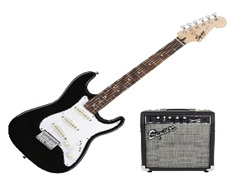

Non-running ceiling fans can be handy places to hang laundry.

OR, you can hang streamers or scarves from your ceiling fan, then open windows on windy days to add a celebratory air to your otherwise bleak life.

To see how my unlikely apocalyptic hero, seventy-year-old Bea Crenshaw, shepherds her grandkids and neighbors through the aftermath of a solar pulse, check out IF DARKNESS TAKES US on Amazon: https://www.amazon.com/Darkness-Takes-Brenda-Marie-Smith-ebook/dp/B07WK9BQHNor order it from your favorite indie bookstore:
The sequel, IF THE LIGHT SHOULD COME, will be out June 2021 from SFK Press.
STAY TUNED FOR FUTURE INSTALLMENTS OF “WHAT NOT TO STOCK FOR AN APOCALYPSE.”
NEXT UP: CASH, GOLD, & OTHER SO-CALLED CASH EQUIVALENTS
3 notes
·
View notes
Text
WHAT NOT TO STOCK FOR AN APOCALYPSE, PART FOUR (Updated)
On the menu for what NOT to stock, STILETTO HEELS & OTHER RIDICULOUS THINGS TO WEAR.
7. STILETTO HEELS:

Does anyone else remember when stiletto heels were considered sexist and exploitive? I guess not. So, we’ll leave aside the arguments about the way they make a woman look primed for sex (for women with strong enough ankles to “wear them well”, who don’t walk in tentative steps and look like they’re going to tip over and face-plant), and we will disregard medical cautions about what said stilettos can do to your feet, legs, and backs (think Chinese foot-binding). Let’s just talk about how impractical these shoes actually are and limit it to their usefulness in an apocalypse.
Forget about running from danger in them unless you are a Herculean athlete like these women.

Most people can’t climb mountains or even hills in the damned things. You can’t hike very far to forage for food and firewood. The heels will stick in all manner of traps on the denuded forest floor.You might be able to use stilettos to walk across your garden bed and poke holes in the soil to plant seeds. You could kick a roving marauder in the eye or the groin, or use the shoes as a bludgeon. You could use these kinds of heels made especially to be weapons.


If you want stilettos for sex play, good for you. You won’t have much else to do for fun.
But for walking, stick to practical shoes. And, if the apocalypse goes on for long, you will need many pairs of boots and sneakers. No one will be making new ones, and creating your own will be next to impossible.
Once your stash of shoes runs out, you’ll be wearing sandals with cut-up tires for soles, or moccasins made from the pelts of small animals you trap and eat, using cardboard and rags to insulate your freezing cold feet and to protect them from stone bruises and the shrapnel of nuclear war.


What did these guys have on their feet during the end times depicted in THE ROAD? Rag wraps inside dilapidated shoes that they strapped to their feet, as I recall. Duct tape may have been involved.

8. POSH HATS:
If a hat doesn’t protect you from the sun or the cold, forget about it. You won’t be needing these (but then, did you ever?)


9. STRING THONGS:
Because what is the point? Go naked. It’s better.
If, in your apocalypse, you have plenty of protein to eat, your glutes may be more muscular from all the trudging and farming and such. Then thongs will provide a nice accent to your behind.
Chances are good, though, that you’ll be skinny and your butt will be sagging, making it hard to even hold up a thong.


To see how my unlikely apocalyptic hero, seventy-year-old Bea Crenshaw, shepherds her grandkids and neighbors through the aftermath of a solar pulse, check out IF DARKNESS TAKES US on Amazon: https://www.amazon.com/Darkness-Takes-Brenda-Marie-Smith-ebook/dp/B07WK9BQHNor order it from your favorite indie bookstore:
The sequel, IF THE LIGHT SHOULD COME, will be out June 2021 from SFK Press.
STAY TUNED FOR FUTURE INSTALLMENTS OF “WHAT NOT TO STOCK FOR AN APOCALYPSE.”
NEXT UP: USELESS ELECTRONIC DEVICES
4 notes
·
View notes
Text
WHAT NOT TO STOCK FOR AN APOCALYPSE, PART THREE (Updated)
Today for what NOT to stock, we have ODDBALL FOOD-LIKE PRODUCTS, things you never knew existed and didn’t think to add to your massive stockpiles (and now that you know, you still won’t want them).
5. PORK RINDS, GENERIC CHEESE CURLS & PEANUT BUTTER PRETZELS (?):

[Photos taken at a Winco store in California, courtesy of novelist/poet, George Randall Leake III.]
What, pray tell, is a peanut butter pretzel? Sounds very dry, like it would stick to the roof of your mouth for eternity, especially without water. These cheese curls are generic, so No Thank You. Pork rinds are basically inflated pig skin and innards, full of air and dry as a desert. I confess that I ate pork rinds by the handfuls as a good Southern kid, but it’s one of the food-ish things that drove me to extreme veganism for years.
Maybe you’ll be lucky enough to live somewhere you can hunt wild boar and make yourself some good ole Southern cracklin’s (fried pork fat for you non-Southerners). Be extremely careful. You don’t want to end up gored to death by a wild boar, like King Robert Baratheon in Game of Thrones. You also don’t want to end up with trichinosis, so cook that boar to death then cook it some more.


King Robert dying after being gored by a boar, bless his heart.

6. CRAB BOIL, DEHYDRATED POTATOES & HUMMUS POWDER
All right, these things make a little more sense IF YOU HAVE WATER. So, if you’ve dug a hidden cistern, like my protagonist Bea did, or if you live by a fresh water source you can control despite the roving marauders with Uzis trying to wrest control away from you, then stock up on that dehydrated food.

If you live where you can gather crabs and you have water to boil them, then go for that crab boil spice, or stock up on the spices that go into it and make your own. I’d be more inclined to put the spice directly on the meat, fish, or fowl rather than waste it in the water, but whatever gets you through the apocalypse is fine by me (as long as it doesn’t involve crimes against me and mine).
Real potatoes that haven’t been dehydrated will last several months if you keep them cool, dry, and unfrozen, perhaps in a root cellar. Planting a potato garden, even in drums and pots, is the best idea. You can bring that drum of potatoes inside when it freezes, if you have a dolly or a lot of people with strong backs.

Instead of hummus powder that requires water, if you can grow your own garbanzo beans, sesame seeds, lemons and garlic, you’re in business. Otherwise, you might want to buy hummus in cans, or its ingredients in cans or jars.



OR, make your own hummus and can it in Mason jars.


To see how my unlikely apocalyptic hero, seventy-year-old Bea Crenshaw, shepherds her grandkids and neighbors through the aftermath of a solar pulse, check out IF DARKNESS TAKES US on Amazon: https://www.amazon.com/Darkness-Takes-Brenda-Marie-Smith-ebook/dp/B07WK9BQHNor order it from your favorite indie bookstore:
The sequel, IF THE LIGHT SHOULD COME, will be out June 2021 from SFK Press.
STAY TUNED FOR FUTURE INSTALLMENTS OF “WHAT NOT TO STOCK FOR AN APOCALYPSE.”
NEXT UP: STILETTO HEELS & OTHER RIDICULOUS THINGS TO WEAR
4 notes
·
View notes
Text
My Review of The City Beautiful by Aden Polydoros
This is an amazingly good book! A queer Jewish historical fantasy thriller, The City Beautiful is unique and engaging from beginning to end. The story is chock full of Jewish folklore and exquisite historical detail and tells the story of teen Alter Rosen, a Jewish immigrant in Chicago during the time of the World's Fair. Alter is grappling with his sexual identity and has a crush on his roommate, Yakov, but Yakov is murdered and his dybbuk inhabits Alter, refusing to leave until Alter finds the killer. Alter teams up with his old flame, Frankie, another Jewish immigrant who has learned to survive on the city's seamy side. Alter's neighbor, Raizel, brings her news reporter skills and her sense of justice to join the two boys in investigating the murders of several Jewish boys in recent weeks.
The book kept me enthralled all the way through, every page a lesson on another culture in the past but also fraught with intrigue and danger. The City Beautiful has it all: tender gay romance, supernatural possession, close friendships, and a crazy killer on the loose who might choose to kill them next. The pages are imbued with poignance and gorgeous prose.
Mr. Polydoros is a young man of extreme talent and huge imagination. I hope to see many more books from him in the years to come.
1 note
·
View note
Text
WHAT NOT TO STOCK FOR AN APOCALYPSE, PART TWO (Updated)
Today for what NOT to stock, we have WEIRD POWDERED FOOD SUBSTITUTES, things with no nutritional value and no conceivable practical use but that are still inexplicably available in bulk.

1. CHEESE SAUCE MIX (What the !!?)
[Photos taken at a Winco store in California, courtesy of novelist/poet, George Randall Leake III.]
First of all, out of the many bulk products we’ve seen in this series, why is this the only item with a NO SAMPLING sign? Presumably, they’ve had problems with people scarfing scoops of dry powder? And what exactly IS dry cheese sauce mix? In an apocalypse, water will be in short supply so you’ll have to eat your cheese sauce powder dry. Unless this stuff comes with jalapenos, Ro-Tel tomatoes, and tortilla chips, and unless it tastes a whole lot better than it looks, you don’t want to buy it, and, if you do, you won’t want to waste water mixing it up in the end times.
Alternatives that have enough preservatives to last decades without refrigeration: VELVEETA and CHEESE WHIZ (which comes sealed in a jar for double protection).


Not that there’s any food value in these cheesy-tasting chemical products either, but it can’t be worse than powdered cheese sauce.
2. POWDERED FRUIT PUNCH & ORANGE DRINK MIXES:

K, even if you like this chemically-colored stuff, in an apocalypse you will have NO WATER! I suppose you can sprinkle them on your mashed cricket dinner to disguise the taste.
I don’t have an alternative for powdered drink mixes, unless you want to stock expensive cases of fruit juice. Better to plant fruit trees to see you through. With the planet heating up, you should be able to grow citrus trees farther and farther north, if you can protect them from freak snow storms, droughts, tornadoes, and hurricanes. Indoor fruit trees might work if they get enough sunlight, and if you have an indoors.

To see how my unlikely apocalyptic hero, seventy-year-old Bea Crenshaw, shepherds her grandkids and neighbors through the aftermath of a solar pulse, check out IF DARKNESS TAKES US on Amazon: https://www.amazon.com/Darkness-Takes-Brenda-Marie-Smith-ebook/dp/B07WK9BQHN or order it from your favorite indie bookstore:
The sequel, IF THE LIGHT SHOULD COME, will be out June 2021 from SFK Press.
STAY TUNED FOR FUTURE INSTALLMENTS OF “WHAT NOT TO STOCK FOR AN APOCALYPSE.”
NEXT UP: ODDBALL FOOD-LIKE PRODUCTS
3 notes
·
View notes
Text
WHAT NOT TO STOCK FOR AN APOCALYPSE, PART ONE (UPDATED)
In my novel IF DARKNESS TAKES US, grandmother Bea Crenshaw secretly bought a second house and filled it with food and survival gear to see her family through a disaster she felt certain was coming. Most of Bea’s choices for stockpiling were great, but she overlooked critical things.
Given that this is 2020 and we’ve got a pandemic, wildfires, hurricanes, and murder hornets to contend with, it might be time to get serious about preparing for whatever happens next.
This is a series of blog posts about what to stock and what NOT to stock for a potential apocalyptic disaster that’s even worse than what we’re experiencing now. Because 2020 ain’t over yet.
Today for what NOT to stock, we have JUNK FOOD, and we’re talking the junkiest.
1. CHEESE BALLS:

[Photos taken at a Winco store in California, courtesy of novelist/poet George Randall Leake III.]
Leaving aside the issue of cheese balls not having one bit of nutritional value and taking up precious storage space for food that isn’t actually food, everyone knows that Cheetos are better, especially crunchy Cheetos, the original kind without extra flavors that turn your fingers orange. And not Cheese Puff Cheetos, though they will do in a pinch.

Those cheese ball containers might be useful after the apocalyptic event, when good containers with tight lids are at a premium. Of course, if you have cheese balls, or if you find them when looting convenience stores, then by all means, eat them.
“She’s always looking for storm-secured bunkers … Nice to know she will survive the coming apocalypse and complete cultural collapse while the rest of us wander around looking for Cheetos and wi-fi.”
- From the novel THE LOVE LETTERS OF ABELARD & LILY by Laura Creedle
2. CANDY (or at least NOT these candies):


Can you believe you can buy this stuff in bulk? I mean, what on Earth are the pink, blue, yellow and purple things? The lemon drops and M&M’s look okay, and some people (NOT me) love Skittles, but if you’re gonna stock up on candy that you’ll save for a special day (i.e., after you survive your fight with zombies or extraterrestrials), at least get some freaking chocolate – either high quality chocolate or chocolate that’s so full of preservatives it will last until the 10thor 20th anniversary of your Armageddon.
Suggestions:


Really, since your air conditioning won’t be working, you might have to go with bulk Reese’s Pieces or M&Ms (preferably with peanuts for protein) for your post-apoc chocolate fix.


Wrapped candies have extra protection for open-air living, but what will you find when you unwrap these things? These candies are so anemic they won’t even cheer you up. They’re probably so chewy they’ll stick to your overstressed teeth.
Candy manufacturers, you need a better plan for the dismal future!
To see how my unlikely apocalyptic hero, seventy-year-old Bea Crenshaw, shepherds her grandkids and neighbors through the aftermath of a solar pulse, check out IF DARKNESS TAKES US on Amazon: https://www.amazon.com/Darkness-Takes-Brenda-Marie-Smith-ebook/dp/B07WK9BQHNor order it from your favorite indie bookstore:
The sequel, IF THE LIGHT SHOULD COME, will be out June 2021 from SFK Press.
STAY TUNED FOR FUTURE INSTALLMENTS OF “WHAT NOT TO STOCK FOR AN APOCALYPSE.”
NEXT UP: WEIRD POWDERED FOOD SUBSTITUTES
6 notes
·
View notes